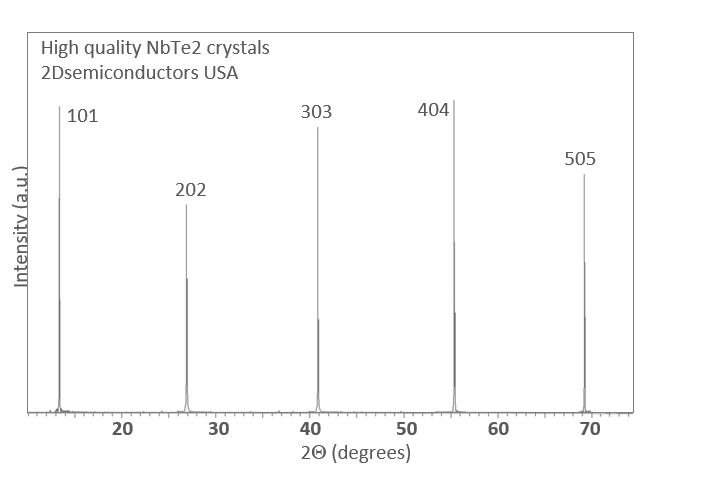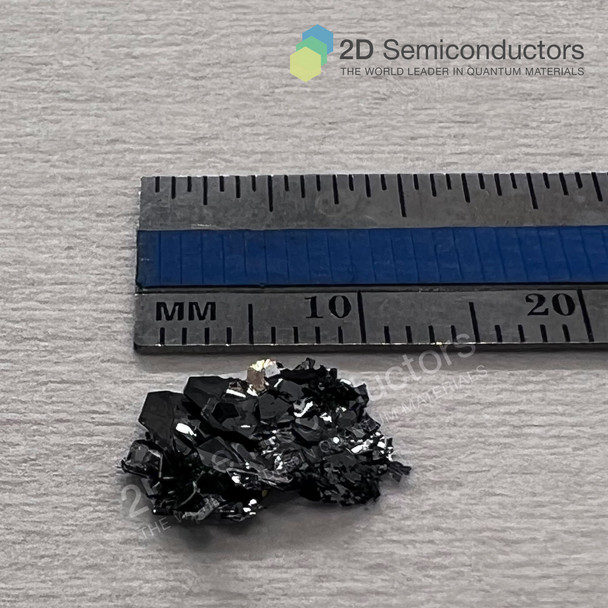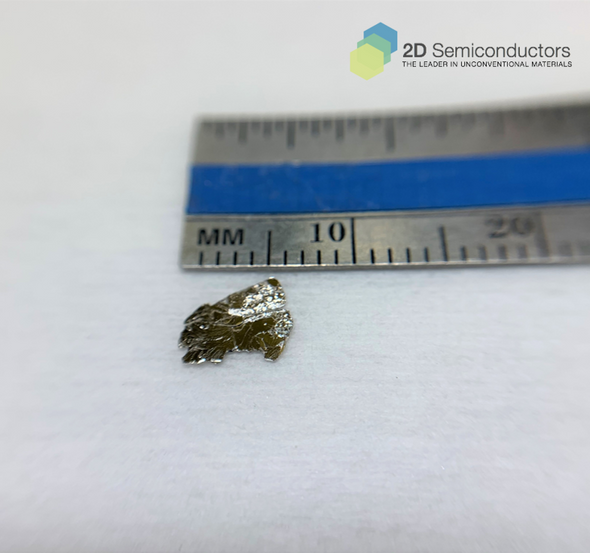Description
Niobium ditelluride (NbTe2) crystal is layered semimetal with charge density wave ground state and superconducting transition at ~1K. While its bulk superconducting transition has been demonstrated at ~1K, its behavior in the monolayer limit remains unknown. Our crystals are 100% environmentally stable : In the bulk form, niobium ditelluride is metallic. Similar to molybdenum disulfide, it has layered structure (lamellar) with weak interlayer coupling. NbTe2 displays metallic and superconducting behavior. Undergoes superconducting transition around 1.1 K in bulk, but predicted to higher for thinner sheets. Unlike other sources, our NbTe2 crystals are grown by defect and impurity free flux zone technique (see the comparison between chemical vapor transport [CVT] below). Clean and defect free nature enabled researchers to observe clean superconductivity, phase transitions, and perform quantum transport measurements with confidence in the crystal.
If your research needs atomically flat NbTe2 samples for scanning tunneling microscopy (STM) measurements please contact us.
Properties of NbTe2 crystals by 2Dsemiconductors USA
| Material properties | Metal and superconductor (some semiconducting behaviour in 2D) |
| Crystal structure | Monoclinic phase |
| Unit cell parameters | a=1.442 nm, b=0.373 nm, c=0.952 nm; α=β=90° γ=108.3° |
| Growth method | [Default] Flux zone (no halide contamination) defect free [Optional CVT]: Contains Br2, Cl2, TeCl4, and other halides |
| Purity | 99.9999% |

Additional Information
Elements: |
Nb,Te |
Element: |
Niobium |
Element: |
Tellurium |
Formula: |
NbTe2 |
Material class: |
MX2 |
Material class: |
Dichalcogen |
Properties: |
Superconductor |
Properties: |
Semimetal |
Properties: |
CDW |
Growth method: |
Flux |
Growth method: |
CVT |
Doping: |
Undoped |











